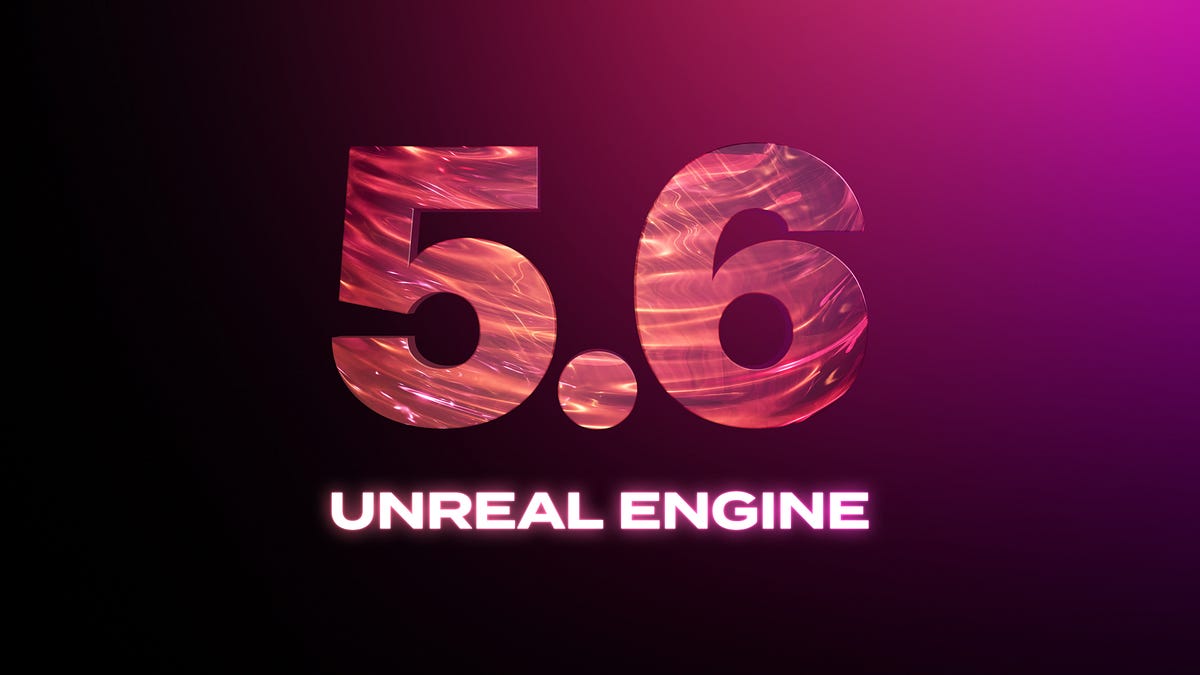Programming News
Dev
366

Image Credit: Dev
Introduction to LocalStack
- LocalStack is a tool to emulate AWS services on your local machine.
- It allows reproduction of services like S3 and Lambda in a local environment.
- Setup is done using Docker, Docker Compose, and YAML configuration files.
- AWS CLI awslocal and Terraform can be used in conjunction with LocalStack.
Read Full Article
22 Likes
Medium
102
Image Credit: Medium
How Variables Work in Python: Deep Dive into Memory and Data Types
- Python 3.13 memory management involves internal mechanisms for memory allocation and reuse.
- Python treats everything as objects, different from languages like C where variables hold values directly.
- Python memory management involves system level allocation, a Python memory manager, and object-specific allocators.
- Understanding mutable and immutable objects is crucial for efficient Python programming.
Read Full Article
6 Likes
Medium
98

Image Credit: Medium
Unreal Engine 5.6 Has Arrived — Here’s Everything You Need to Know
- UE5.6 introduces Nanite with dynamic tessellation for detailed surfaces without traditional baking.
- Lumen's improvements in global illumination and reflections enhance performance and realism.
- Procedural Content Generation, Blueprint enhancements, and improved rendering make UE5.6 powerful and versatile.
- Enhanced support for virtual production, MetaHumans, VR, and OpenXR makes Unreal Engine 5.6 robust.
- Rendering improvements, stability, and scalability across platforms make UE5.6 a standout release.
Read Full Article
5 Likes
Medium
409

Image Credit: Medium
Please Don’t Blame JavaScript if It’s Slow — The Real Performance Culprits
- Blaming JavaScript for slow web apps is a common misconception among developers.
- Performance issues often stem from coding practices, memory management, and understanding the engine.
- Rather than blaming the language, developers should focus on optimizing code and understanding bottlenecks.
- Improper DOM manipulation, memory leaks, and inefficient algorithms are common culprits for slow apps.
- Taking responsibility for code performance and mastering tools are key to becoming a better developer.
Read Full Article
24 Likes
Discover more
- Software News
- Web Design
- Devops News
- Open Source News
- Databases
- Cloud News
- Product Management News
- Operating Systems News
- Agile Methodology News
- Computer Engineering
- Startup News
- Cryptocurrency News
- Technology News
- Blockchain News
- Data Science News
- AR News
- Apple News
- Cyber Security News
- Leadership News
- Gaming News
- Automobiles News
Medium
251

Image Credit: Medium
AI Coding on your own Terms
- Using AI tools like Cursor, CodiumAI, CoPilot, and Tabnine for coding assistance.
- Maintaining coding standards crucial when using AI to code faster.
- Sample ruleset for solo devs ensuring code coherence and consistency.
- Automate style enforcement, leave code cleaner, follow branching strategy, and use conventional commits.
- AI aids in development, but developers are accountable for code quality and security.
Read Full Article
15 Likes
Dev
119

Image Credit: Dev
Critical Security Importance Digital Age Web Techniques(1751197804668800)
- Exploring a Rust-based web framework highlighted paramount importance of security and reliability.
- Security concerns in modern applications emphasize need for continuous security measures and robust defenses.
- Rust's memory and concurrency safety, combined with framework's resilient design, enhance application security.
- Framework offers secure input validation, session management, CSRF protection, and dependency management.
- Practical security considerations like least privilege, audits, coding standards, dependency updates are crucial.
Read Full Article
7 Likes
Dev
388

Image Credit: Dev
Dynamic Fluent Interface for API calls (Powered by JS Proxy)
- A dynamic fluent interface for API calls powered by JS Proxy simplifies code writing when working with REST APIs.
- The API calls can be made in a clean and expressive manner, where resources and HTTP methods are dynamically resolved at runtime.
- The Proxy object in JavaScript is the key to enabling this elegant interface, allowing interception of object operations like property access or function calls.
- The approach involves the get trap for dynamic property access, the apply trap for function invocation, and recursion for building URL paths, resulting in a powerful and flexible API client.
Read Full Article
23 Likes
Dev
170

Image Credit: Dev
Refactoring Techniques and Code Evolution Strategies How to Improve Code Without Breaking Functionality(1751197689159700)
- A junior computer science student shares insights on developer_experience development and modern web framework design.
- The student explores Rust-based web frameworks, highlighting the benefits of memory safety and performance optimization.
- Performance analysis shows significant improvements due to the framework's asynchronous architecture and zero-cost abstractions.
- The student concludes that the framework's combination of type safety, performance, and developer experience makes it a great choice for scalable applications.
Read Full Article
10 Likes
Dev
98

Image Credit: Dev
Pitfall Records and Solutions Technical Growth Trajectory Sharing of a Computer Science Student(1751197165336800)
- A junior computer science student shared insights into their transformative journey of learning development.
- The student explained the benefits of Rust-based web frameworks, emphasizing memory safety and performance optimization for developing high-performance applications.
- Extensive testing and optimization led to significant performance improvements due to the async architecture and zero-cost abstractions of the framework.
- The student concluded that the framework's combination of type safety, performance, and developer experience makes it an excellent choice for scalable application development.
Read Full Article
5 Likes
Dev
221

Image Credit: Dev
Perfect Landing: Hug Your Cat Day
- A developer created a landing page for International Hug Your Cat Day, focusing on a cute and interactive design.
- The landing page features soft pastel colors, hand-drawn-style illustrations, a quiz, and a digital cat that responds when clicked or tapped.
- The developer utilized React for JavaScript and Tailwind for CSS in building the project.
- Credits for illustrations, texts, and sounds used in the project are given, with an invitation for feedback and suggestions for improvement.
Read Full Article
13 Likes
Dev
8

Image Credit: Dev
Mastering Asynchronous Programming Patterns Task Modern Web(1751197087313100)
- Understanding modern async programming with a Rust-based framework revolutionizes traditional approach challenges.
- This framework leverages Tokio async runtime, showcasing significant performance improvements and async runtime insights.
- Async streams for handling large data sets efficiently, with clear async vs. sync performance comparison.
- Deep dive reveals benefits: performance boost, resource efficiency, enhanced user experience, and scalability.
Read Full Article
Like
Dev
239

Image Credit: Dev
Application and Evolution of Design Patterns in Modern Programming Modernization of Classic Patterns(1751196525967300)
- Junior computer science student explores Rust-based web frameworks and their benefits for developer experience and application performance.
- The use of Rust in web framework development offers a blend of memory safety and performance optimization, ideal for building high-performance applications.
- Performance analysis showcases the framework's asynchronous architecture and zero-cost abstractions, leading to significant performance improvements while maintaining code clarity.
- The exploration highlights the importance of type safety, performance, and developer experience in modern web development, making the discussed framework a strong choice for building scalable applications.
Read Full Article
14 Likes
Dev
196

Image Credit: Dev
Flame Graph Reveals Performance Optimization Truth Deep Analysis by Computer Science Student(1751196485519800)
- A junior computer science student shares insights on a performance optimization journey through a deep analysis of modern web framework design.
- The student discovered the power of Rust-based web frameworks, highlighting their memory safety and performance optimization benefits for creating high-performance applications.
- Extensive testing and optimization led to significant performance improvements, showcasing the framework's asynchronous architecture and zero-cost abstractions for exceptional throughput and code clarity.
- The experience deepened the student's understanding of modern web development principles, emphasizing the framework's strengths in type safety, performance, and developer experience for scalable applications.
Read Full Article
11 Likes
Medium
94

Image Credit: Medium
Why Mobile-First Learning Is the Smartest Move for Your Business
- Mobile-first learning is becoming crucial for businesses to train their employees where they already spend a lot of time - on their phones.
- It involves creating training content specifically for mobile screens, focusing on short, engaging sessions that can be accessed on the go.
- Mobile-first learning improves completion rates and retention by offering knowledge in bite-sized sessions conducive to modern work environments.
- This approach not only boosts productivity and reduces knowledge gaps but also aligns training with how modern teams operate, ultimately driving real results.
Read Full Article
5 Likes
Javacodegeeks
221

Image Credit: Javacodegeeks
[DEALS] Microsoft Visual Studio Professional 2022 + The Premium Learn to Code Certification Bundle (97% off) & Other Deals Up To 98% Off
- Microsoft Visual Studio Professional 2022 + The Premium Learn to Code Certification Bundle is being offered at a discount of 97% on the Deals store.
- Various other deals include the Premium Python Programming PCEP Certification Prep Bundle, Babbel Language Learning Lifetime Subscription, Internxt Cloud Storage Lifetime Subscription, and more.
- Subscription offers like EaseUS Data Recovery Wizard and the All-in-One Super-Sized Ethical Hacking Bundle are also available at significant discounts.
- Readers can subscribe to the newsletter for free eBooks on Java, JPA, JVM troubleshooting, JUnit Tutorial, and more to enhance their skillsets.
Read Full Article
13 Likes
For uninterrupted reading, download the app